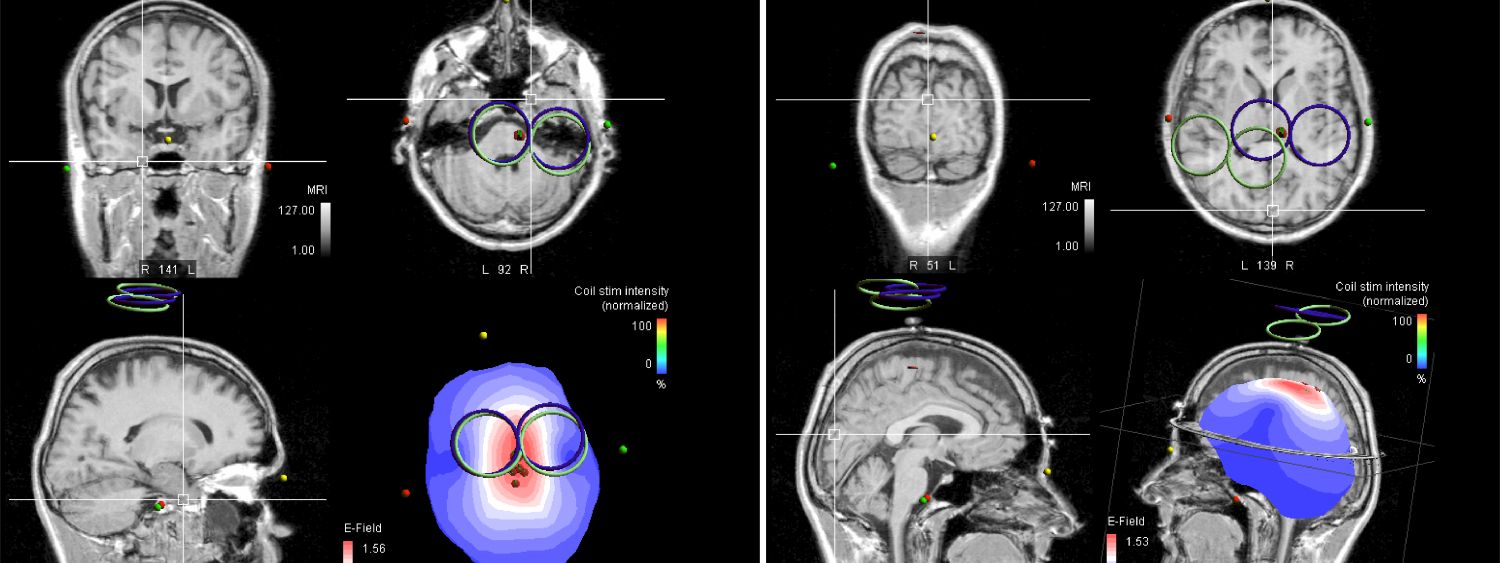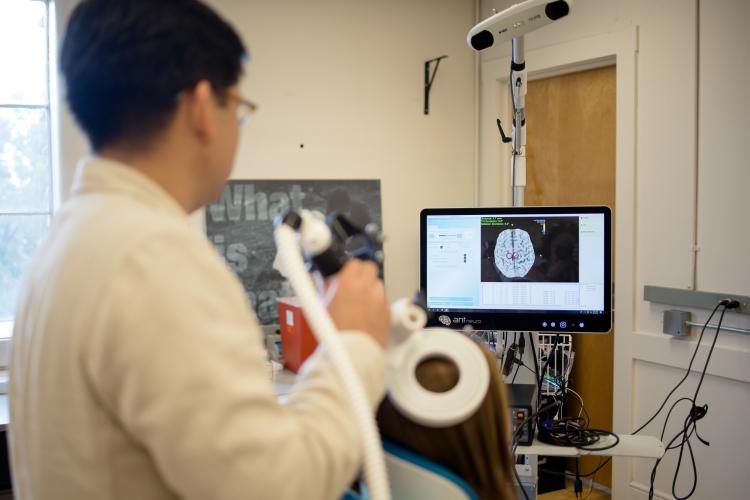Neural Excitability

Project Overview
This study investigates neurophysiological mechanisms underlying corticospinal excitability and sensorimotor cortical activity in response to neuroplasticity-priming interventions. We use non-invasive transcranial magnetic stimulation (TMS) to assess the net responsiveness of descending motor pathways to the ankle muscles, alongside electroencephalography (EEG) to capture cortical activity changes. A neuronavigation system is used to precisely target the lower limb motor area, ensuring accurate and reproducible stimulation.

Assessing Corticospinal Excitability
Corticospinal excitability reflects the net responsiveness of one of the primary descending motor pathways from the primary motor cortex to the muscles. It can be quantified using single-pulse TMS, which elicits motor-evoked potentials (MEPs) in the target muscle.
Following incomplete spinal cord injury (iSCI), corticospinal excitability to the ankle muscles is significantly reduced. These reductions have been associated with impaired foot clearance during the swing phase of walking. By assessing corticospinal excitability, this study provides critical insights into neuroplastic changes that support functional recovery.
Assessing Intracortical Inhibition and Facilitation
The balance between short-interval intracortical inhibition (SICI) and intracortical facilitation (ICF) is important for motor control and neuroplasticity. These mechanisms can be assessed using paired-pulse TMS, where a conditioning stimulus modulates the response to a subsequent test stimulus.
- Intracortical inhibition reflects GABAergic inhibitory mechanisms within the primary motor cortex, a mechanism important for supressing motor activity.
- Intracortical facilitation reflects glutamatergic excitatory circuits and contributes to motor learning and plasticity.
Examining changes in SICI and ICF will elucidate neural adaptations that may enhance motor function after iSCI.
Assessing Changes in Sensory and Motor Cortical Activity
We combine TMS and EEG to evaluate neurophysiological responses at the cortical and muscle levels. Key measures include:
- TMS-evoked potentials (TEPs): Reflect cortical excitability and connectivity changes following stimulation.
- Somatosensory-evoked potentials (SEPs): Capture sensory processing alterations following peripheral nerve stimulation.
- Motor-evoked potentials (MEPs): Assess corticospinal tract integrity and motor output.
These multimodal assessments provide a comprehensive view of sensory and motor cortical adaptations, offering mechanistic insights into how neuroplasticity-priming interventions shape motor recovery.
Significance
This project examines the neurophysiological mechanisms underlying adaptive plasticity following neuroplasticity-priming interventions, such as acute intermittent hypoxia (AIH). By characterizing changes in neural excitability, our findings will contribute to the development of targeted rehabilitation strategies aimed at improving motor function after neurological injury.

